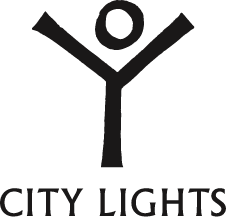Amitava Kumar is a writer and journalist. He was born in Ara, India, and grew up in the nearby town of Patna, famous for its corruption, crushing poverty, and delicious mangoes. Kumar is the author of the novel Immigrant, Montana, as well as several other books of nonfiction and fiction. He lives in Poughkeepsie, New York, where he is Professor of English on the Helen D. Lockwood Chair at Vassar College.
His new book is A Time Outside This Time, published by Knopf. He will be in conversation with Aleksandar Hemon, celebrating his new book, in our City Lights LIVE! discussion series on October 13th, 2021!
Where are you writing to us from?
I’m sitting in my study. I live close to the Vassar College campus in upstate New York. I can see the Casperkill Creek from my window. And also a yellowwood tree that I have put into my novel. My narrator’s wife thinks, “It is the most beautiful tree in the world.”
What’s kept you sane during the pandemic?
Writing. Though, I have to add, it was difficult to start writing when, through those beginning months, all I could taste on my tongue was panic. Then, I started painting. I painted on the obituaries in the New York Times for the Covid-dead.
What books are you reading right now? Which books do you return to?
I’ve started reading Tolstoy Together: 85 Days of War and Peace that Yiyun Li has edited. Am also reading Francine Prose’s The Vixen and Richard Powers’s Bewilderment. This past summer, I was teaching at Sewanee and got my fellow teacher Claire Messud’s The Burning Girl. I have now reached Part II in the book. Claire has got the lives of those girls down just right. I have a child at home right now and there is a lot happening in my head when I’m reading The Burning Girl. Next, I want to read Katie Kitamura’s Intimacies.
I keep returning to the writings of Janet Malcolm and Joan Didion, not least because I’m teaching them in my class this semester.
Which writers, artists, and others influence your work in general, and this book, specifically?
V. S. Naipaul was an early influence. You know, postcolonials in the West, that sort of thing. John Berger was a major, major influence and certainly played a part in this new novel. J.M. Coetzee for his reading of power. One of the books that I kept close when writing A Time Outside This Time was Claudia Rankine’s Citizen: An American Lyric. The economy of the writing was appealing to me but even more so was the use of visuals in dialogue with the text. I’m going to be in discussion at City Lights with Aleksandar Hemon and his book, The Lazarus Project, was an inspiration too. The same is true about the work of my friend, Teju Cole. And others like Jenny Offill, Geoff Dyer, and Michael Ondaatje.
If you opened a bookstore, where would it be located, what would it be called, and what would your bestseller be?
We learn in the opening pages of A Time Outside This Time that our narrator is kicking back at a villa on Lake Como. He is there on a cushy fellowship. Now that I think of it, that little town of Bellagio needs a bookstore. I’d invite all the visiting fellows to do readings. The bestseller at the store? You know, I just re-read two William Maxwell novels. They Came Like Swallows and So Long, See You Tomorrow. I find them so simple and piercing. In my bookstore, I’ll keep a stack of them on my check-out counter. People will buy a copy of, say, Cormac McCarthy’s Blood Meridian, and I’ll pick up a copy of So Long, See You Tomorrow, and say, “Have you read this by any chance? Can I offer a really strong recommendation?”

